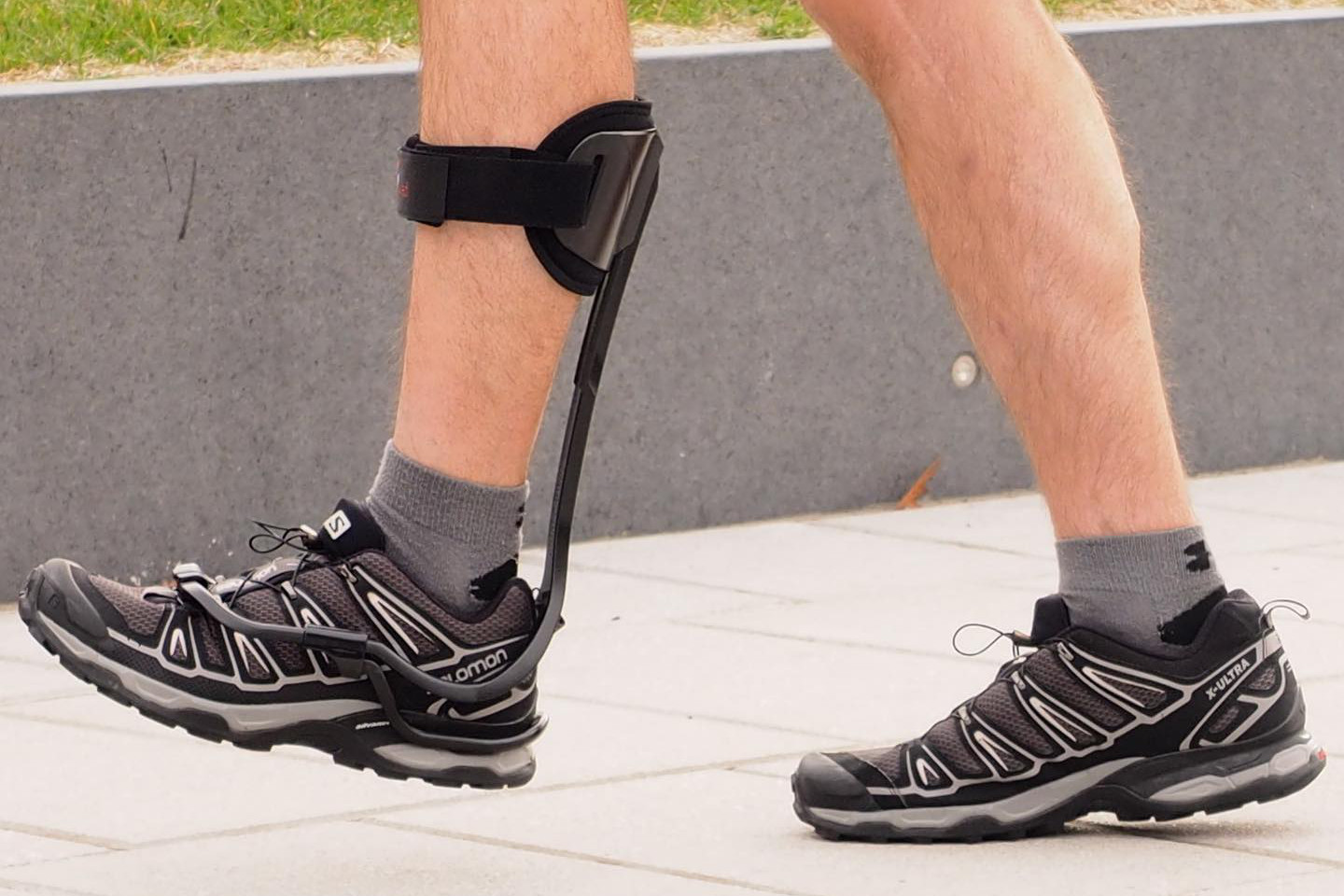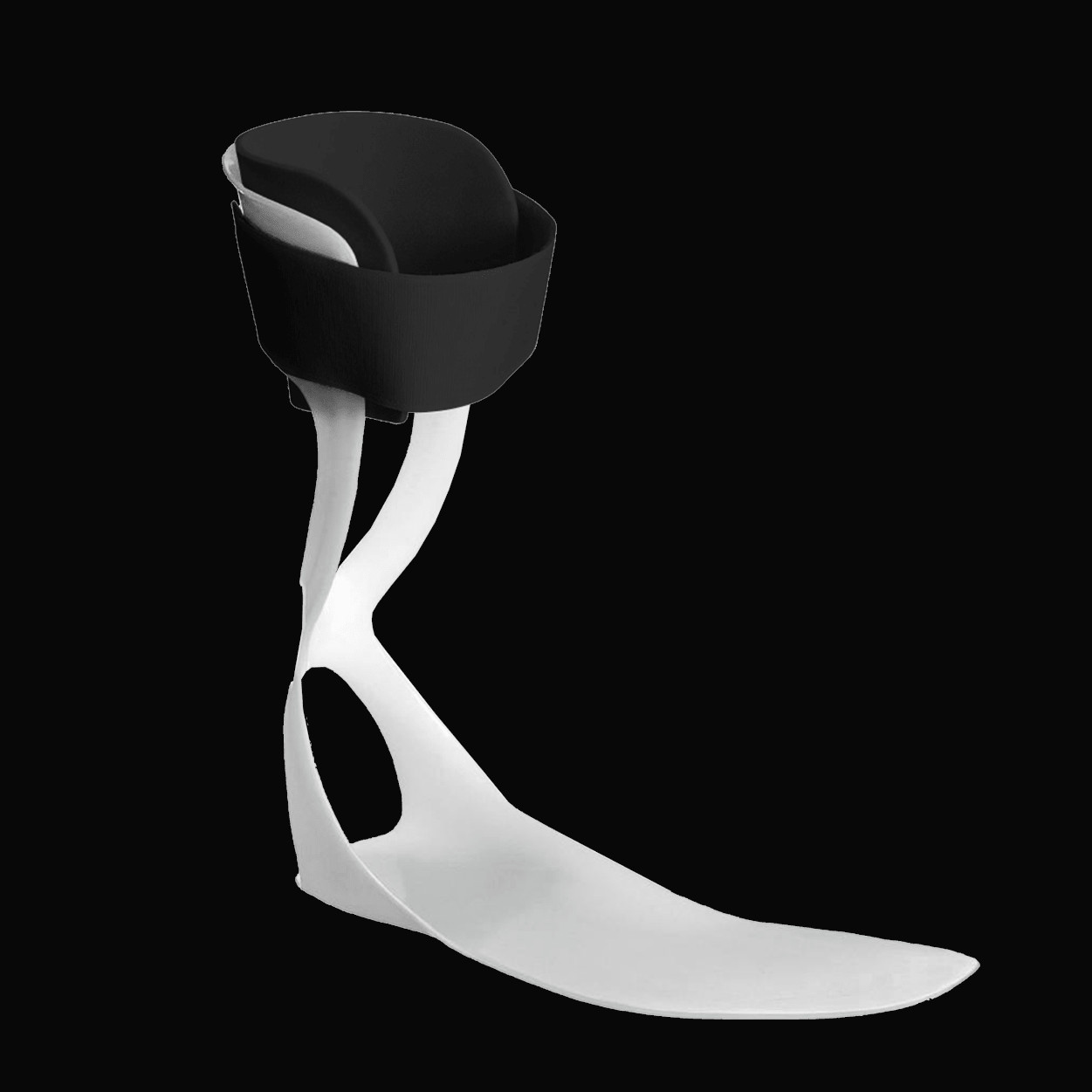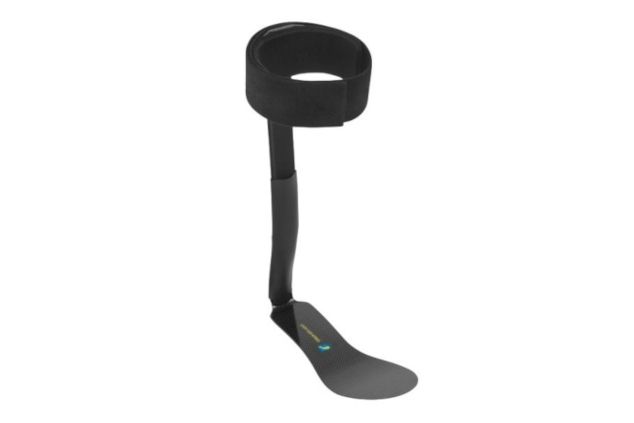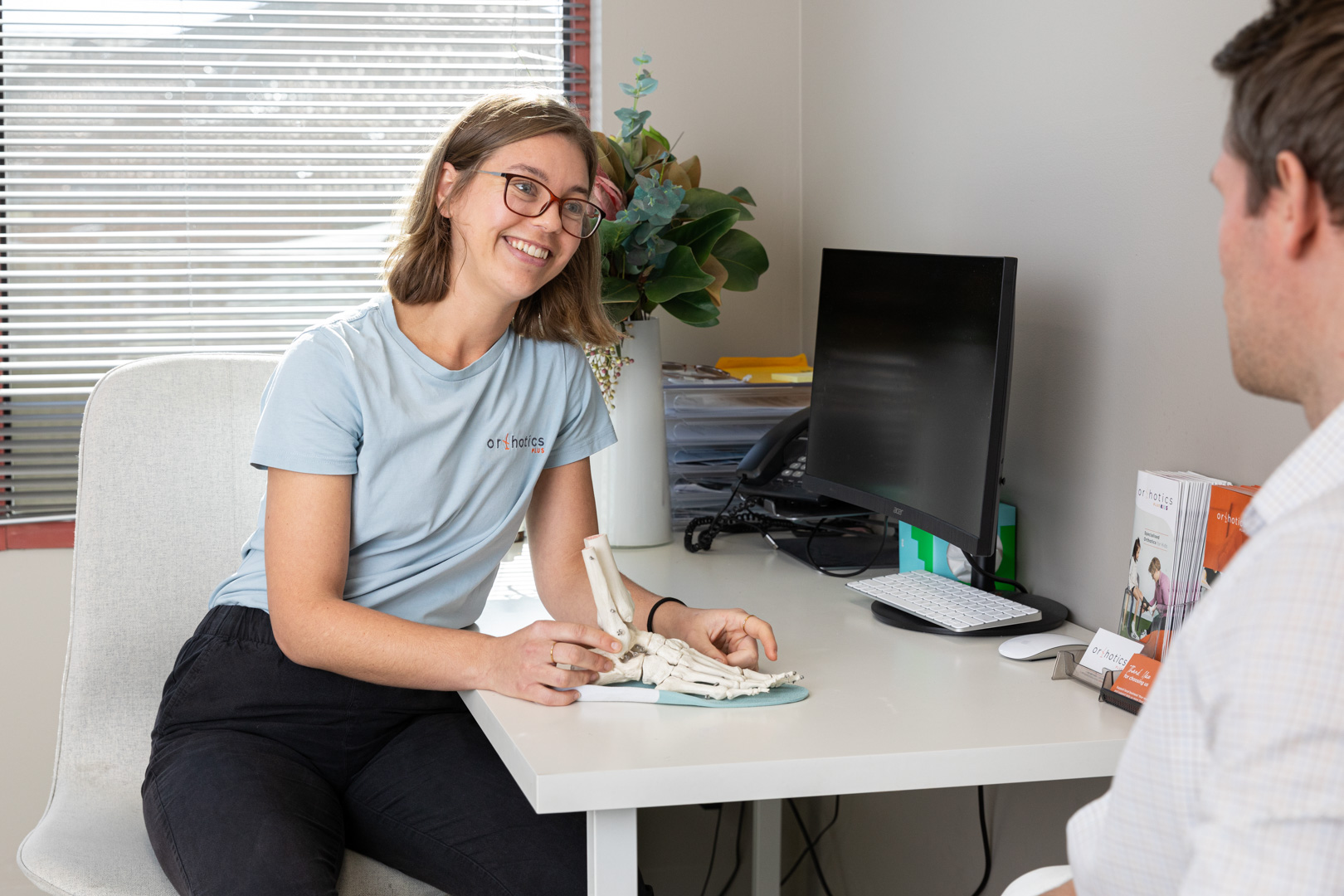Leafspring AFO
A Leaf Spring AFO is a slimline AFO that is characterised by a thin strut located at the rear of the leg that extends behind the ankle joint and along the bottom of the foot.
It is generally made from plastic or carbon fibre and has an amount of flexibility and spring to assist the wearer in their gait while allowing for a more natural walking style.
A correctly prescribed posterior leaf spring AFO will allow some plantarflexion on heel contact, which is important for a smooth and natural gait, but is stiff enough to provide dorsiflexion assistance during the swing phase.
Show more
The difference between a leaf spring and the other AFOs is where the trim lines sit. The trim lines of a Leaf Spring AFO are very slim as some flexibility in the material is needed to utilise energy return and propulsion.
In contrast, a posterior shell AFO is designed for rigidity in the medial-lateral, dorsiflexion and plantar flexion movements.
Show less
Book a Foot Assessment Call (03) 9077 6414

Suitability of Prescription
During normal walking, our toes clear the ground by 5mm-20mm on average. Even a small crack can trip you up! Dorsiflexion weakness, which hinders toe clearance, presents a hazard. This is where a leaf spring AFO (Ankle-Foot Orthosis) is beneficial.
Leaf Spring AFOs are typically prescribed for dorsiflexion weakness. Their slim, lightweight, and flexible design lifts the foot, preventing it from dropping and catching during the swing phase of walking.
The AFO stores energy during the stance phase and provides propulsion at toe-off, allowing for a more efficient, safe, and natural walking style.
The dorsiflexors, running from the shin to the foot, lift the foot while walking. Weak or damaged dorsiflexors cause foot drop (also known as drop foot and toe drag), instability, and increase the risk of falls.
A Leaf Spring AFO is ideal for correcting foot drop or dorsiflexion weakness. However, it may not be suitable for patients with medial-lateral instability or malalignment.

Prefabricated & Custom Leaf Spring AFOs
Two different Leaf Spring AFO options are available: prefabricated and custom.
Prefabricated options are not necessarily inferior to custom made devices. They can be appropriate for patients depending on their foot shape and the cause of their foot drop. These pre-fabricated options are more cost-effective and are generally recommended for patients with simple presentations, regular anatomy or when the foot drop is temporary (ocassionally part of surgery rehabilitation).
For patients with chronic dorsiflexion weakness, atypical anatomy or other particular presentations we almost always recommend custom-made Leaf Spring AFOs. Like all other custom-made AFOs, we’d first take a cast of the leg to ensure we obtain an exact replica of the leg shape.
We would then fabricate the brace according to this shape and the clinical assessment your orthotist has performed.

Functional Outcomes of a Leafspring AFO
Overall, safety is the most important outcome for a patient when receiving any type of AFO.
When someone has dorsiflexion weakness, they’re very unstable and at high risk for falls and injuries.
Almost immediately after wearing a Leaf Spring AFO, these patients will see a noticeable change in their walking pattern. The foot will clear the ground more easily and clear the floor/steps/obstacles better than before.
This translates into improved gait, confidence in walking and performing daily activities.

Booking an Assessment at Orthotics Plus
You are welcome to self refer using our referrals page.
- We have multiple clinics throughout Melbourne
- You can choose Telehealth for an initial appointment if you live a far distance from us – however you will need to visit us afterwards for accurate assessment and fitting
- We are an NDIS registered company and can complete Assistive Technology request forms on your behalf
- We stock multiple types of AFOs
For other enquiries you may have, please visit our clinic locations page for your nearest Orthotics Plus.

FAQ
Anyone wearing a Leaf Spring AFO should still have almost full range of motion. They are a light device.
This device is less intrusive than other options, especially those that prevent ankle motion.
Yes, for suitable patients, It’s better to wear the Leaf Spring AFO.
People with dorsiflexion weakness are more unstable when they’re barefoot. Stability increases slightly once they have shoes on, but the most stability is achieved when they’re actually wearing the AFO.
Yes, it can.
Wearing the AFO not only helps to support stability while walking (i.e. lower the risk of falls) – it also helps to prevent back pain, hip pain and other musculoskeletal issues associated with gait compensations.
A problem that many patients with dorsiflexion weakness experience is that they have to compensate for it in their movements. Usually this is to hike their hip up higher, flex their hip more and increase the load on their opposite leg.
Because these patients are walking in an abnormal pattern, they’re using certain body parts in a way that they’re not designed to be used. That can be a cause of long-term injury and muscle imbalance.